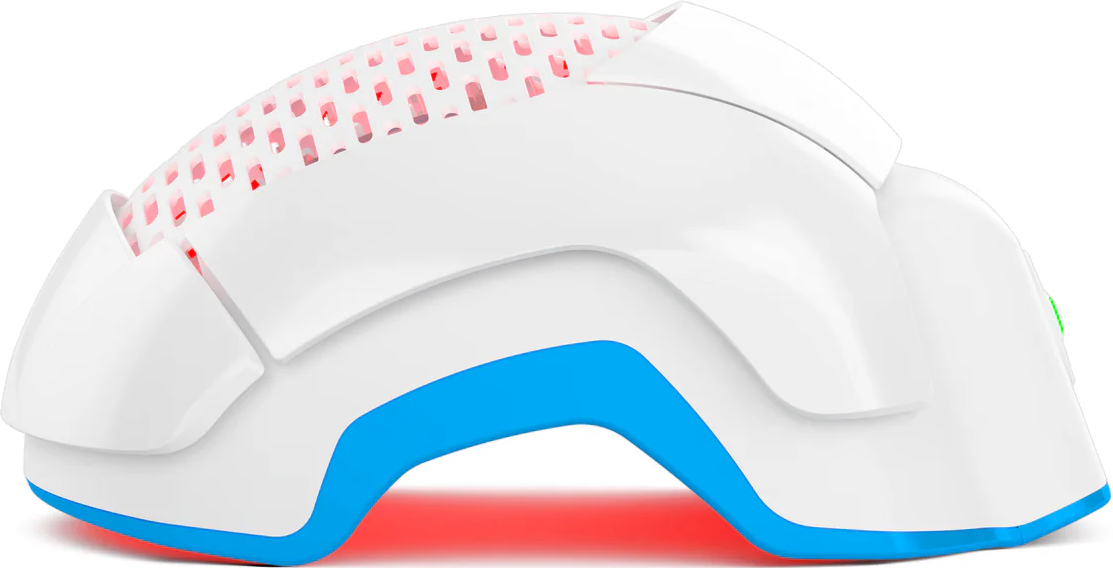GLP-1 medicines like semaglutide and tirzepatide rarely list “hair loss” as a side effect. When shedding happens, it’s usually telogen effluvium triggered by fast weight loss, not direct follicle damage. Reported rates are small but real. However, the FDA label links hair loss to weight reduction rather than the drug itself.
What Exactly Are GLP-1 Drugs and Why Are They So Popular Right Now?
GLP-1 receptor agonists mimic an intestinal hormone that helps regulate appetite and glucose. They enhance insulin when glucose is high, dampen glucagon, and slow gastric emptying, which together reduce energy intake. Dual-agonists like tirzepatide target both GIP and GLP-1 receptors and tend to produce even larger weight loss in trials.
Landmark trials showed robust weight loss with both semaglutide and tirzepatide. That pace of weight change is partly why hair gets cranky.
Does Wegovy or Zepbound Cause Hair Loss Directly?
Not directly by poisoning follicles. The signal we see is secondary to weight loss. The FDA Wegovy label lists hair loss as an adverse reaction in 3% of adults and 4% of adolescents with obesity in clinical trials. The FDA Zepbound label reports hair loss more often in women than men, 7.1% vs 0.5%, and explicitly notes the reaction was associated with weight reduction in trial participants.
So the path looks indirect. Not chemical. Physiologic.
What Kind of Shedding Is This, Clinically?
Most cases resemble telogen effluvium. That is a diffuse, stress-related shed where many hairs jump from growth to rest phase after a trigger such as illness, surgery, iron deficiency, or rapid weight change. It typically begins 2–3 months after the trigger and resolves as the stressor abates, often within 6–9 months.
Is it permanent? Usually no. The follicle reservoir remains intact.
Why Would Weight Loss Cause Shedding in the First Place?
Two converging reasons. First, calorie deficit and appetite changes can reduce protein, iron, zinc and other micronutrients that support anagen. Second, rapid systemic shifts act as a stressor to the follicular cycle itself. We see a similar pattern after metabolic or bariatric surgery, where meta-analyses report high TE incidence during the most intense weight change period. GLP-1s can accelerate weight loss via central appetite pathways and delayed gastric emptying, which amplifies that risk window.
How Do I Tell Telogen Effluvium from Pattern Hair Loss?
A quick checklist. TE sheds diffusely and acutely, with more hair in hands and the shower drain. Pattern hair loss thins at the crown, mid-scalp, and temples with miniaturization over time. They can overlap, which complicates life. That is why a scalp exam and sometimes labs for ferritin, thyroid, and B12 make sense.
But people with underlying androgenetic alopecia may notice TE “unmasking” it.
Practical Timeline: If Shedding Starts, When Does It Peak and Settle?
Typically peaks around month 3–4 after the trigger and then tapers as the hair cycle resets. Many see improvement by month 6 and more obvious volume recovery by month 9–12, assuming nutrition and health stabilize.
Patience helps. Photos help more than memory.
Should I Stop My GLP-1 Medication If My Hair Is Shedding?
Usually not without speaking to your medical provider. These drugs treat high-risk conditions and have substantial cardiometabolic benefits. Trial-level evidence for their efficacy and safety is strong. Work with your clinician to optimize the dose ramp, slow the weekly loss rate if feasible, and screen for correctable deficiencies. That is the boring but effective strategy.
What Actually Helps the Scalp While Staying on GLP-1s?
1) Nutrition and labs, first.
Protein at each meal, iron sufficiency, and overall calories matter for anagen. Consider ferritin, B12, vitamin D and thyroid testing based on your clinician’s judgment.
2) Topicals with evidence.
Minoxidil remains a cornerstone for pattern hair loss. It can also shorten the TE trough by nudging follicles into anagen, though evidence in TE is less formal. The American Academy of Dermatology includes minoxidil and at-home laser therapy in patient guidance for hereditary hair loss management.
3) Laser Phototherapy (LPT)
You will also see studies call it LLLT or photobiomodulation. Multiple randomized, sham-controlled trials and meta-analyses show increases in hair density and hair shaft diameter in androgenetic alopecia with home devices, with a favorable safety profile. The AAD also notes lasers as a safe, painless option that requires ongoing sessions to maintain gains.
For safety clarity. Home LPT devices for hair growth are FDA-cleared medical devices via the 510(k) pathway under the “infrared lamp” classification, and device optics typically use Class 3R low-power lasers that do not heat tissue.
So… Gentle light, consistent use, and patience.
Will LPT Help If My Shed Is Telogen Effluvium and not Classic Pattern Loss?
Different mechanism, same opportunity. TE is about synchrony and cycle recovery. While LPT evidence is strongest for androgenetic alopecia, its pro-anagen, anti-inflammatory, and mitochondrial effects may assist during recovery and often pair well with minoxidil in mixed cases. Reviews in dermatology outline those mechanisms and practical uses across alopecia types, with low risk in home use when devices are used as directed.
It is not a crash course, though. It takes months, not days.
How Fast Can I Lose Weight without Angering My Follicles?
There is no perfect number. In the clinic, we often aim for gradual weight loss with adequate protein and micronutrient intake. The TE literature and bariatric meta-analyses tell us it is the speed and magnitude that predict shedding risk, not a single cut-off.
A small adjustment in pace can be enough. Simple, unsexy, effective.
Conclusion
GLP-1s change appetite, weight, and metabolism in powerful ways. Sometimes the hair cycle blinks. That blink is typically temporary telogen effluvium. Nourish, pace the ramp, and use evidence-based scalp support. If you want a device-based option that fits into a busy life, Laser Phototherapy is a friendly, FDA-cleared adjunct with randomized-trial support for pattern loss and a logical role when TE overlaps. Quiet routines win here.






















